A myocardial infarction affects which of the following blood vessels of the heart?
Coronary
Aorta
Pulmonary
Vena cava
Correct Answer : A
A myocardial infarction affects the coronary blood vessels of the heart.
A myocardial infarction, commonly known as a heart attack, occurs when blood flow decreases or stops in the coronary artery of the heart, causing damage to the heart muscle 1.
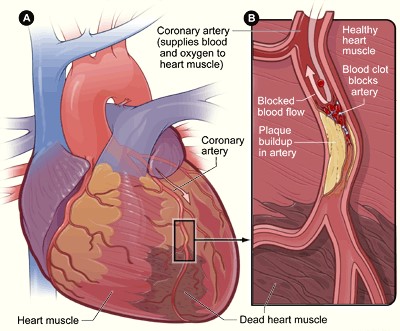
Choice B is incorrect because the aorta is not a blood vessel of the heart.
The aorta is the main artery that carries oxygenated blood from the heart to the rest of the body.
Choice C is incorrect because the pulmonary blood vessels are not affected by a myocardial infarction.
The pulmonary blood vessels carry deoxygenated blood from the heart to the lungs.
Choice D is incorrect because the vena cava is not a blood vessel of the heart.
The vena cava is a large vein that carries deoxygenated blood from the body to the heart.
TEAS 7 Exam Quiz Bank
HESI A2 Exam Quiz Bank
Find More Questions 📚
Teas 7 Questions: We got the latest updated TEAS 7 questions
100% Money Refund: 100% money back guarantee if you take our full
assessment pass with 80% and fail the actual exam.
Live Tutoring: Fully customized live tutoring lessons.
Guaranteed A Grade: All students who use our services pass with 90%
guarantee.
Related Questions
Correct Answer is C
Explanation
The two major parts of the nervous system are the Central Nervous System (CNS) and the Peripheral Nervous System (PNS).
The CNS is made up of the brain and spinal cord and acts as the integration and command center of the body.
The PNS represents the conduit between the CNS and the body and is further subdivided into the somatic nervous system (SNS) and the autonomic nervous system (ANS).
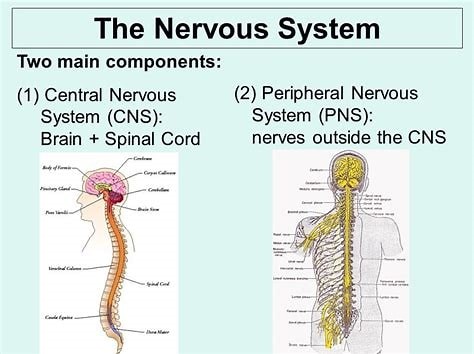
Choice A is incorrect because it only mentions two subdivisions of the PNS, which are the autonomic nervous system (ANS) and somatic nervous system (SNS).
Choice B is incorrect because it only mentions one major part of the nervous system, which is the PNS, and one subdivision of it, which is the SNS.
Choice D is incorrect because it only mentions one major part of the nervous system, which is the CNS, and one subdivision of the PNS, which is the ANS.
Correct Answer is B
Explanation
In DNA, the nitrogenous bases adenine (A) and thymine (T) pair together, while cytosine (C) and guanine (G) pair together.
Therefore, the complementary strand of the given DNA sequence 3' TCGATCGCA 5' would have the complementary nitrogenous bases as:
5’ AGCTAGCGT 3’
NOTE: The 5’ to 3’ direction of the complementary strand is opposite to that of the given strand.
Choice A.
3’ AGCTAGCGT 5’ is not correct because it is not complementary to the given strand.
Choice C.
5’ UCGAUCGCA 3’ is not correct because it contains uracil (U), which is a nitrogenous base found in RNA, not DNA.
Choice D.
3’ TCGUTCGCU 3’ is not correct because it also contains uracil (U), which is a nitrogenous base found in RNA, not DNA.
Correct Answer is D
Explanation
Sodium bicarbonate neutralizes the acidity of chyme.
The pancreas secretes large amounts of sodium bicarbonate, which protects the duodenum by neutralizing the acid that comes from the stomach.
This compound helps neutralize stomach acid generated during the digestive process.
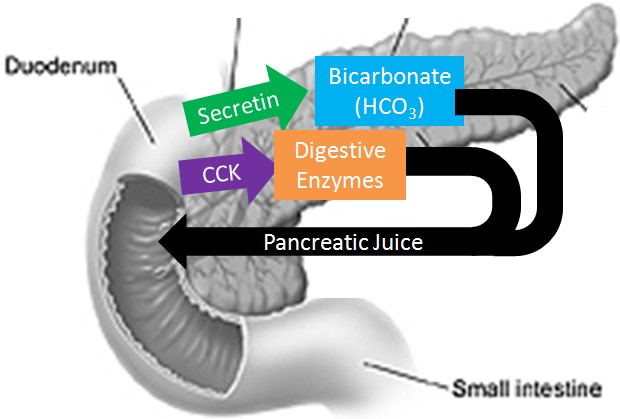
Choice A is incorrect because sodium bicarbonate is not a protease that digests carbohydrates.
Proteases are enzymes that break down proteins, while sodium bicarbonate is a chemical compound that helps neutralize stomach acid.
Choice B is incorrect because sodium bicarbonate does not stimulate the pyloric sphincter.
The pyloric sphincter is a ring of smooth muscle that separates the stomach from the duodenum and regulates the passage of partially digested food (chyme) into the small intestine.
Choice C is incorrect because sodium bicarbonate does not inhibit peristalsis.
Peristalsis is a series of wave-like muscle contractions that move food through the digestive tract.
Correct Answer is D
Explanation
A decline in osteoblast activity while osteoclast activity continues at expected levels results in osteoporosis.
Osteoporosis is caused by an imbalance between the functioning of osteoclast and osteoblast cells.
Osteoblasts are responsible for forming new bone, while osteoclasts break down old bone.
If osteoblast activity declines while osteoclast activity continues at expected levels, this means that more bone is being broken down than is being formed, leading to a loss of bone density and an increased risk of osteoporosis.
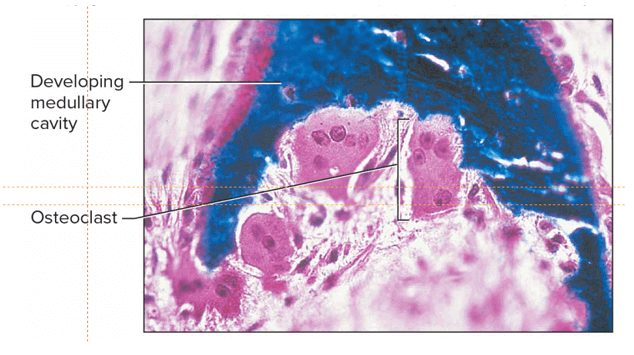
Choice A is incorrect because an increase in osteocyte activity would not result in osteoporosis.
Osteocytes are mature bone cells that maintain the mineral concentration of the bone matrix.
Choice B is incorrect because a decline in osteoclast activity would not result in osteoporosis.
Osteoclasts break down old bone, so a decline in their activity would mean that less bone is being broken down.
Choice C is incorrect because an increase in osteocyte activity would not result in osteoporosis.
As mentioned earlier, osteocytes are mature bone cells that maintain the mineral concentration of the bone matrix.
Correct Answer is C
Explanation
The hypothalamus is a region of the brain that synthesizes antidiuretic hormone (ADH), also known as vasopressin.
ADH is then transported to the posterior pituitary gland via neurohypophysial capillaries, where it is stored until it is ready to be secreted into the circulation.
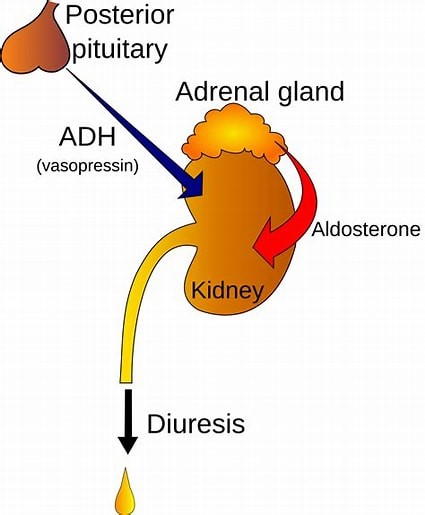
Choice A.
Pineal gland is not correct because it is a small endocrine gland located in the brain that secretes the hormone melatonin, which regulates sleep-wake cycles, but it does not synthesize ADH.
Choice B.
Thymus is not correct because it is a gland located in the chest that produces hormones involved in immune system development, but it does not synthesize ADH.
Choice D.
Pancreas is not correct because it is a gland located behind the stomach that secretes hormones such as insulin and glucagon, which regulate blood sugar levels, but it does not synthesize ADH.
Correct Answer is A
Explanation
A catalyst is a substance that increases the rate of a chemical reaction without being consumed by the reaction.
As a result, the reaction is completed in a shorter amount of time.
Choice B is not correct because using a catalyst does not necessarily result in the formation of a more desirable product.
Choice C is not correct because using a catalyst does not necessarily result in the release of a greater amount of heat energy by the reaction.
Choice D is not correct because using a catalyst does not necessarily increase the yield of product.
Correct Answer is A
Explanation
A myocardial infarction affects the coronary blood vessels of the heart.
A myocardial infarction, commonly known as a heart attack, occurs when blood flow decreases or stops in the coronary artery of the heart, causing damage to the heart muscle 1.

Choice B is incorrect because the aorta is not a blood vessel of the heart.
The aorta is the main artery that carries oxygenated blood from the heart to the rest of the body.
Choice C is incorrect because the pulmonary blood vessels are not affected by a myocardial infarction.
The pulmonary blood vessels carry deoxygenated blood from the heart to the lungs.
Choice D is incorrect because the vena cava is not a blood vessel of the heart.
The vena cava is a large vein that carries deoxygenated blood from the body to the heart.
Correct Answer is A
Explanation
The approximate threshold value for mammalian neurons is -55 mV.
The threshold potential is the critical level to which a membrane potential must be depolarized to initiate an action potential.
Most often, the threshold potential is a membrane potential value between –50 and –55 mV
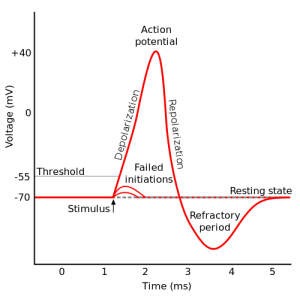
The membrane potential of a neuron is determined by the distribution of ions across the cell membrane.
At rest, the inside of a neuron is more negative than the outside due to the presence of negatively charged proteins and other molecules.
The movement of ions across the cell membrane can change the membrane potential.
For example, when sodium ions enter the cell, they make the inside of the cell more positive (less negative), causing depolarization.
Choice B is incorrect because -80 mV is below the typical threshold value for mammalian neurons.
Choice C is incorrect because +35 mV is above the typical threshold value for mammalian neurons.
Choice D is incorrect because 0 mV is above the typical threshold value for mammalian neurons.
Correct Answer is C
Explanation
Plasma B cells.
Antibodies are produced by specialized white blood cells called B lymphocytes (or B cells).
When an antigen binds to the B-cell surface, it stimulates the B cell to divide and mature into a group of identical cells called a clone.
The mature B cells, called plasma cells, secrete millions of antibodies into the bloodstream and lymphatic system.
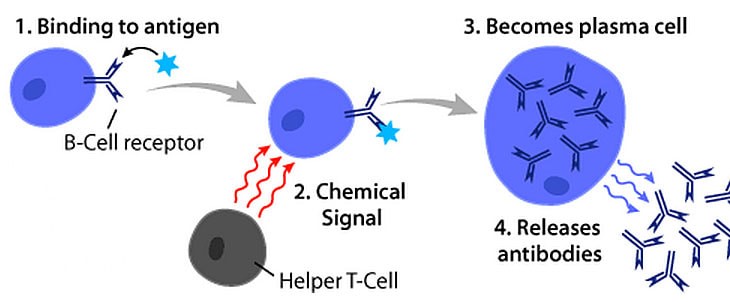
Choice A, Natural killer cells, is not the correct answer because natural killer cells are a type of white blood cell that play a major role in the host-rejection of both tumors and virally infected cells.
Choice B, Cytotoxic T-cells, is not the correct answer because cytotoxic T-cells are a type of white blood cell that kills cancer cells, cells that are infected (particularly with viruses), or cells that are damaged in other ways.
Choice D, Helper T-cells, is not the correct answer because helper T-cells are a type of white blood cell that play an important role in the immune system by helping other white blood cells fight infections.
Correct Answer is B
Explanation
The hypothalamus is a small region of the brain located just above the brainstem. It serves as a critical control center for maintaining homeostasis — the body’s internal balance. One of its key roles is regulating core body temperature through a process called thermoregulation.
The hypothalamus monitors the body's temperature using temperature-sensitive neurons. If the body becomes too hot or too cold, the hypothalamus initiates responses to bring the temperature back to a normal range by:
- Triggering sweating to cool down the body.
- Initiating shivering to generate heat.
- Adjusting blood flow to the skin for heat loss or retention.
In addition to temperature regulation, the hypothalamus also controls other vital functions like:
- Hunger and thirst
- Sleep-wake cycles
- Hormone release (by influencing the pituitary gland)
- Stress response
Why the Other Options Are Incorrect:
- A. Pituitary gland: While the pituitary gland is known as the “master gland” because it controls other endocrine glands, it does so under the direction of the hypothalamus. It does not directly regulate body temperature.
- C. Adrenal gland: The adrenal glands produce hormones like cortisol and adrenaline, primarily involved in the stress response, not temperature regulation.
- D. Pancreas: The pancreas is mainly responsible for regulating blood sugar levels through insulin and glucagon, not body temperature.
Thus, the hypothalamus is the part of the endocrine system most responsible for maintaining homeostasis, including regulating core body temperature.
This question was extracted from the actual TEAS Exam. Ace your TEAS exam with the actual TEAS 7 questions, Start your journey with us today
Visit Naxlex, the Most Trusted TEAS TEST Platform With Guaranteed Pass of 90%.
Money back guarantee if you use our service and fail the actual exam. Option of personalised live tutor on your area of weakness.
